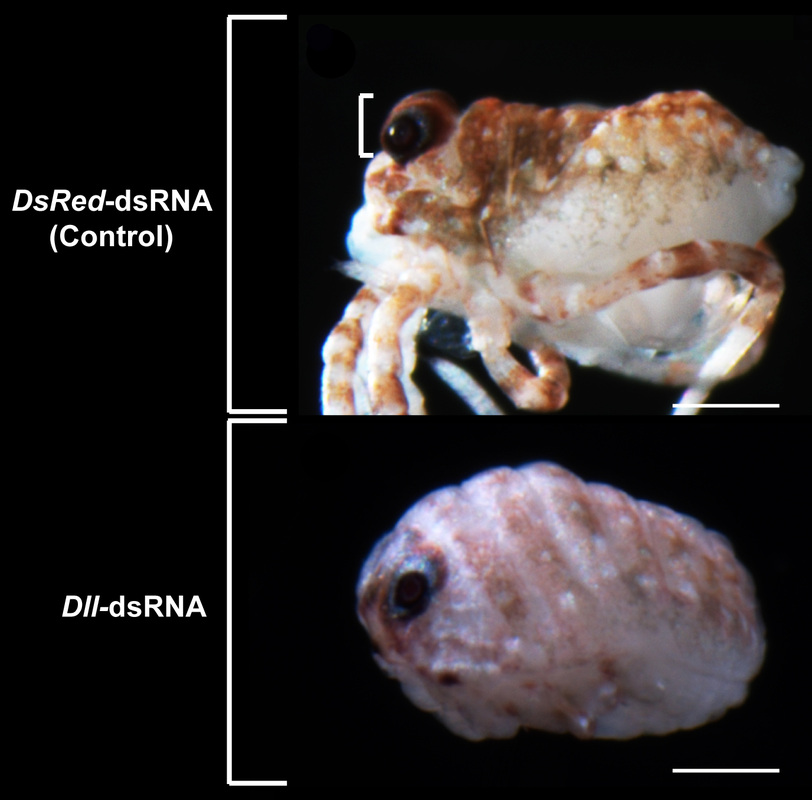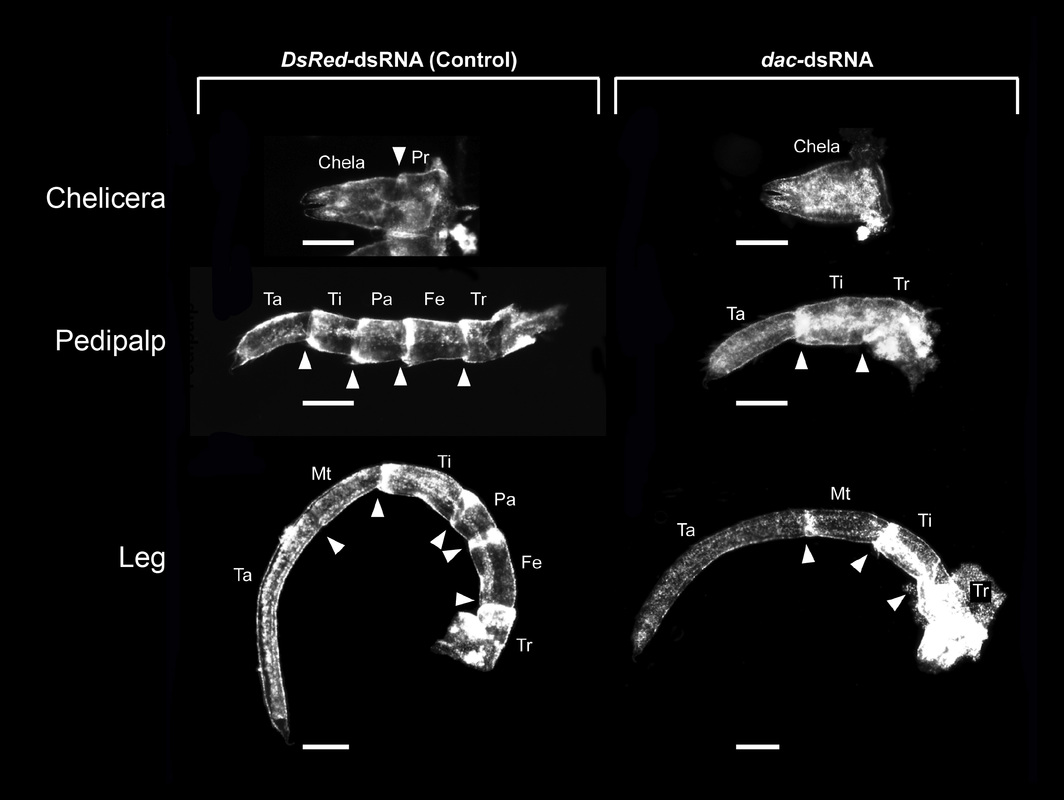Gene silencing in the harvestman
Establishment of functional techniques is a key step toward testing hypotheses in evolutionary developmental biology. Through an EDEN fellowship in 2012, I recently established a protocol for zygotic RNAi in the harvestman Phalangium opilio.
Knockdown of the leg gap gene Distal-less results in a classic phenotype with distal appendage truncations.
Knockdown of the leg gap gene Distal-less results in a classic phenotype with distal appendage truncations.
Following up on the gene expression work on the cheliceral dachshund domain, this gene was also silenced in developing embryos. Consistent with its function as a canonical leg gap gene in insects, knockdown of dachshund results in the loss of the podomeres femur and patella in the pedipalps and legs. Additionally, a two-segmented chelicera is associated with the strong knockdown phenotype.
These data suggest conservation of leg gap gene activity in patterning the proximo-distal appendage axis of evolutionarily distant arthropods.


